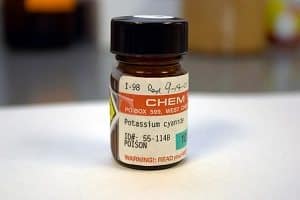
In a study published recently in the Journal of Arthroplasty, researchers demonstrated that single photon emission tomography/CT (SPECT-CT) can be useful in identifying the cause of unexplained pain in patients who have undergone metal-on-metal hip replacement. The researchers studied 15 patients—with a total of 19 metal-on-metal hip replacement devices—who were experiencing unexplained hip pain. The […]

Chrome-Cobalt Hip Patients are Experiencing Cobaltism
In a study published recently in the Journal of Arthroplasty, researchers demonstrated that single photon emission tomography/CT (SPECT-CT) can be useful in identifying the cause of unexplained pain in patients who have undergone metal-on-metal hip replacement.
The researchers studied 15 patients—with a total of 19 metal-on-metal hip replacement devices—who were experiencing unexplained hip pain.
The researchers compared the patients before and after SPECT-CT, comparing diagnoses and treatment plans, Healio reports. They used a chi-square test to assess whether SPECT-CT data changed the diagnosis or treatment of patients’ pain. The researchers report that SPECT-CT was useful for all patients and led to in clinical management decisions for 13 of the 19 patients with unexplained pain. The other six patients continued to have unexplained pain, but SPECT-CT confirmed the initial non-operative treatment plan should be continued. Following SPECT-CT, loosening was observed in three femoral stems and one acetabular cup. Revision surgery was recommended for these four patients, according to Healio reports. In one patient with a normal SPECT-CT, there was evidence of intracapsular joint fluid on the MRI, That patient was given a local anesthetic hip injection to relieve the pain, and the revision surgery was recommended.
MoM hip implants were introduced to the market with the expectation that they would be more durable and longer lasting than earlier implants made from a combination of materials. But the devices have instead proved problematic, with reports of higher than expected early failure rates. High rates of injuries and complications have necessitated additional surgery for many recipients, Consumers Union reports. DePuy Orthopaedics, Biomet, Stryker, and Smith & Nephew are among the manufacturers who have recalled MoM hips. Thousands of hip recipients have sued manufacturers over injuries and complications they allege are due to defective design of the devices. In the last year, Stryker and Biomet have reached settlements in multidistrict litigations over their MoM hips.
With metal-on-metal hip implants, when the hip’s metal components rub together during movement they create minute metallic debris that can enter the patient’s bloodstream and severely damage tissue and muscle, the New York Times reports. In addition to metallic debris in the bloodstream, recipients MoM hips have reported injuries including pain, loosening of the joint, hip dislocation, difficulty walking, and cysts around the joint. Many of these patients have undergone revision surgery to remove and replace metal hips with safer, more reliable models.
Regulators worldwide have focused attention on the problems with Mom hips and in October 2014, the European Commission’s Scientific Committee on Emerging and Newly Identified Health Risks (SCENHIR) issued recommendations for people with these devices. SCENHIR recommended annual follow-up for the life of the joint for patients who receive large-head devices and for patients with special risk factors like small component size and female gender. The committee recommends all patients undergo clinical and radiographic examination during follow-up. Metal ion testing should be done on a routine basis for patients with large-head MoM hips and for hip resurfacing patients in the first postoperative years and thereafter depending on the device’s performance.
The authors of the new study concluded that SPECT-CT should be a specialist test in cases where conventional investigations fail to identify potential causes of hip pain, Healio reports.


